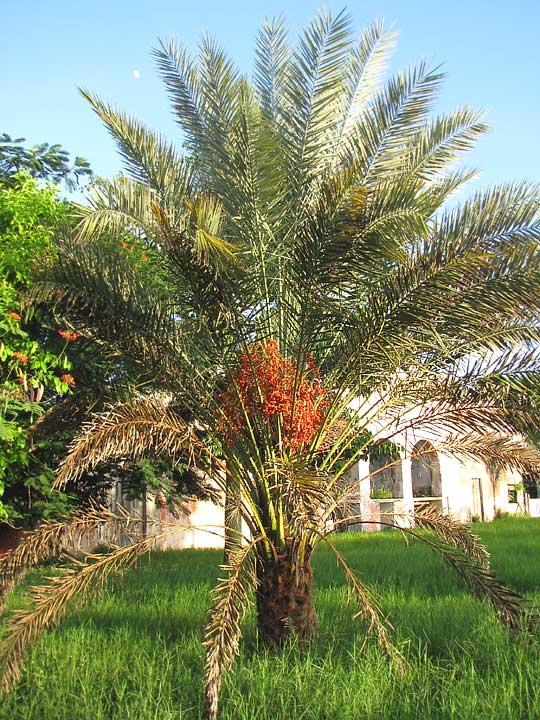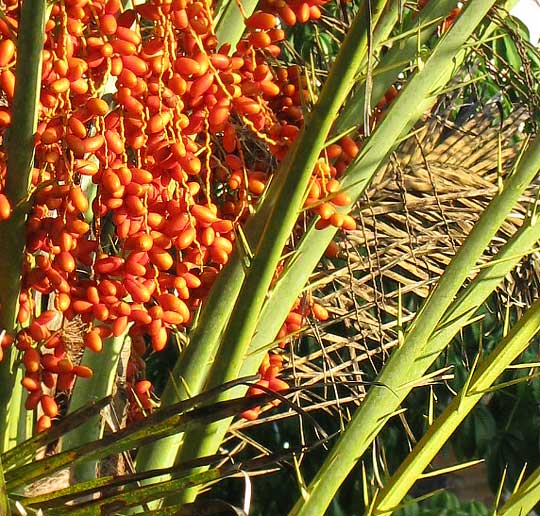Excerpts from Jim Conrad's
Naturalist Newsletter
from the September 29, 2008 Newsletter written in Sabacché and issued from a ciber in nearby Tekit, Yucatán, MÉXICO
A WILD DATE
No, my hormones haven't reactivated. I mean "Wild Date" as in PHOENIX SYLVESTRIS, one of the date palms. Despite the name Wild Date, it doesn't grow wild here. A native of India, it's planted throughout the world's tropical zones.
So, the other late afternoon I was sauntering past the big landowner's gate, happened to glance inside, and there stood this ornamental Wild Date, which you can see below:

In the reddish, low-slanting sunlight it couldn't have been prettier. Every organism has a certain moment in its life when everything about it reaches a certain state of perfection, and surely that palm's moment was right then. The white dot in the blue sky at the palm's left is the Moon, so even the Moon cooperated.
The orange items in the palm's center are clusters of numerous 3/4-inch-long fruits, seen close-up below:

When we refer to date palms in general we're speaking of the genus Phoenix. It's unclear whether that classical Greek name derives from the ancient Phoenicia or Egypt's fabled bird. THE Date Palm -- the one producing sweet, gummy dates people may still snip into their Christmas fruitcakes -- is a different species, Phoenix dactylifera.
The genus is fairly easy to identify, its two main field marks being that it bears pinnately compound (featherlike) fronds and the fronds' lower pinnae, or leaflets, are represented by stiff, often hard and sharp spines. In the last picture those spines are clearly visible.
Bailey's Manual of Cultivated Plants, so important to me that it's included in my backpack when I'm wandering like this, describes the spines as 1/5 to 2/5 inch long, but you can see that this one's are an inch or more long. I'm guessing that the deal is that the various ornamental date palm species have been hybridized to the extent that many or most have a few genes of other species, so maybe this one has some long-spine genes.
That's a young Wild Date in the picture, just starting to grow. The species reaches 50 feet and mature specimens have stout, columnar trunks. Species in Phoenix are dioecious, which means that they come in boy and girl trees, so obviously that's a lady in the picture. The Wild Date's sap is so sweet that sugar can be made from it.